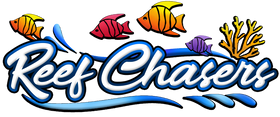|
View Marine Fish Compatibility Chart
Synchiropus picturatus
The Yellow Target Mandarin Goby, scientifically known as Synchiropus picturatus, is a captivating and colorful fish species that belongs to the Callionymidae family. This marine beauty is highly sought after for its vibrant yellow coloration, intricate patterns, and unique body shape, making it a prized addition to reef or marine aquariums.
Originating from the Indo-Pacific region, particularly found in the coral reefs of the Western Pacific Ocean, the Yellow Target Mandarin Goby showcases a striking combination of colors and patterns. Its body is elongated and slender, with a rounded head, large pectoral fins, and a small mouth positioned towards the bottom of its face.
This species typically reaches an average length of around 2-3 inches (5-8 cm) when fully grown. Its body is predominantly covered in a bright yellow coloration, resembling the warm glow of sunshine. The Yellow Target Mandarin Goby is adorned with intricate blue and orange patterns, creating a visually stunning display of colors that make it stand out in any aquarium setting.
One of the distinguishing features of the Yellow Target Mandarin Goby is its unique swimming behavior. It glides through the water column with grace and agility, using its pectoral fins to hover and navigate around the rocks and corals. Its movements are slow and deliberate, making it a fascinating fish to observe in an aquarium.
The Yellow Target Mandarin Goby is known for its peaceful nature and can be kept in a well-established reef or marine aquarium. It should be provided with plenty of hiding spots, live rock, and a sandy substrate, as it spends most of its time near the bottom of the tank. Additionally, a mature tank with a stable population of copepods and amphipods is recommended, as the Yellow Target Mandarin Goby feeds primarily on small invertebrates in the wild.
When it comes to feeding, the Yellow Target Mandarin Goby has specific dietary requirements. It is a specialized feeder that primarily consumes live copepods and amphipods. Therefore, it is crucial to establish a sustainable population of these small crustaceans in the aquarium to ensure the goby's long-term health and well-being. Supplementing its diet with frozen or live foods, such as brine shrimp or mysis shrimp, can also be beneficial.
Maintaining optimal water conditions is crucial for the well-being of the Yellow Target Mandarin Goby. It prefers a well-maintained aquarium with stable water parameters, including a temperature range of 72-78°F (22-26°C) and a pH level of 8.1-8.4. Regular water changes and the use of a good filtration system are essential to maintain water quality.
Overall, the Yellow Target Mandarin Goby is a visually striking and highly desirable addition to reef or marine aquariums. Its vibrant yellow coloration, intricate patterns, and unique swimming behavior make it a standout species that adds beauty and elegance to your underwater world. With proper care, a suitable environment, and a well-established copepod population, the Yellow Target Mandarin Goby can thrive and become a mesmerizing centerpiece in your aquatic display.
The Mandarin Goby likes to feed on live foods like copepods and amphipods but can also eat frozen foods like brine and mysis shrimp. In the wild these fish are constantly hunting for their food and can eat hundreds of copepods in a day.
Some Mandarins will refuse to eat anything but live copepods and amphipods but some can be adapted to eating prepared frozen foods. They are less likely to contract marine ich because they don't have the typical skin type that is affected by the disease.
Gobies will also benefit greatly from live phytoplankton which is readily available to them in the wild.
|

